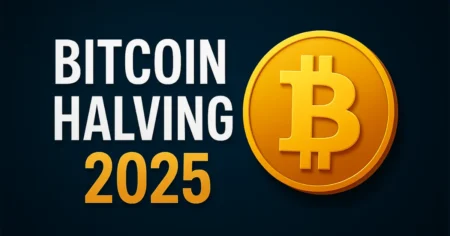AI in cryptocurrency
In recent years, the fusion of Artificial Intelligence (AI) and cryptocurrency has ignited a technological transformation like no other. AI is no longer just powering chatbots or recommendation engines—it’s now shaping the financial frontier by integrating with blockchain, enhancing security, improving trading precision, and making crypto smarter and more accessible. But what does this mean for everyday investors, traders, and tech enthusiasts?
This article dives deep into the fascinating world where AI meets crypto. Whether you’re a blockchain newbie or a seasoned trader, understanding how AI is redefining cryptocurrency can give you a major edge. It’s not just about automation; it’s about leveraging data in ways that humans can’t match in speed or scale. We’re talking about intelligent algorithms that can scan thousands of data points in milliseconds to predict market movements, detect fraud, or even analyze crypto sentiment across Reddit and Twitter. Let’s explore how this synergy is revolutionizing the way we perceive and interact with digital currencies.
Introduction to AI in the Crypto Landscape
The convergence of AI and blockchain technology
AI and blockchain are two of the most disruptive technologies of our era—and when they merge, the results can be groundbreaking. Blockchain, known for its decentralized and transparent ledger system, and AI, recognized for its ability to process massive datasets and learn from them, complement each other in extraordinary ways. AI can improve the efficiency of blockchain operations, while blockchain can enhance the trust and transparency of AI-driven processes.
Think about smart contracts—these self-executing contracts are coded with rules and conditions. AI can optimize these contracts by analyzing past transaction data and suggesting improvements or automatically executing them based on real-world inputs. Imagine an AI system monitoring supply chain data via IoT devices and triggering a smart contract on Ethereum the moment goods arrive at a destination. This blend of automation and trust is changing industries from logistics to healthcare.
Moreover, AI can be used to enhance scalability solutions in blockchain by predicting congestion points in the network, optimizing transactions, and reducing fees. When paired effectively, AI and blockchain are not just improving systems—they’re building entirely new frameworks of trust and functionality.
Why AI matters in the crypto ecosystem
Cryptocurrency markets are volatile, unpredictable, and operate 24/7. That’s a lot for a human to keep up with. Enter AI—a tool designed to crunch numbers, learn patterns, and make intelligent decisions at lightning speed. In crypto, AI matters because it brings automation and intelligence to a space that is often dominated by hype, speculation, and gut-feeling decisions.
One of the main challenges in crypto trading is information overload. Every day, thousands of tweets, Reddit posts, YouTube videos, and news articles flood the internet. AI cuts through this noise by analyzing trends, identifying key influencers, and even detecting coordinated pump-and-dump schemes. With Natural Language Processing (NLP), AI can understand human sentiment and gauge the mood of the market more accurately than any single person ever could.
Another key reason AI matters is that it democratizes access to advanced trading strategies. In the past, hedge funds used machine learning models to gain an edge. Today, individual traders can use AI-powered tools to make informed decisions without needing a PhD in data science. From automated bots to predictive analytics dashboards, AI is leveling the playing field in crypto investing.
Understanding the Basics
What is Artificial Intelligence?
Artificial Intelligence (AI) refers to the simulation of human intelligence in machines that are programmed to think, learn, and make decisions. It’s a broad field that encompasses machine learning (ML), deep learning (DL), natural language processing (NLP), and neural networks. In simple terms, AI allows machines to perform tasks that would typically require human intelligence—like recognizing patterns, understanding language, or making decisions based on data.
At its core, AI thrives on data. The more data you feed it, the smarter it gets. Machine learning algorithms can analyze past behaviors, identify trends, and make predictions based on new inputs. That’s why AI is so powerful in fields like healthcare, finance, and now, cryptocurrency.
In the context of crypto, AI isn’t about building a robot that trades Bitcoin. It’s about using intelligent systems to analyze blockchain data, predict market trends, automate portfolio decisions, and improve security. As crypto continues to mature, AI will be at the center of innovation, driving smarter, faster, and safer financial ecosystems.
What is Cryptocurrency and Blockchain?
Cryptocurrency is a form of digital or virtual currency that uses cryptography for security. Unlike traditional currencies issued by governments, cryptocurrencies are decentralized and operate on a technology called blockchain. Bitcoin, Ethereum, and Solana are just a few of the thousands of cryptocurrencies in circulation today.
Blockchain is the underlying technology that makes crypto possible. It’s essentially a distributed ledger that records transactions across many computers so that the record can’t be altered retroactively. Every block in the chain contains a list of transactions, and once a block is completed, it’s linked to the previous one, forming a secure and tamper-proof chain.
So how does this connect to AI? Well, while blockchain ensures the integrity and security of transactions, AI can analyze blockchain data in real-time to uncover trends, detect fraud, or optimize transaction throughput. It’s a powerful combo. Blockchain builds the system; AI makes it smarter.
How AI is Transforming Cryptocurrency
AI-driven crypto trading bots
Trading bots powered by AI are arguably one of the most impactful innovations in the crypto world. These bots are not just simple rule-based programs—they are intelligent systems that learn from historical data, adapt to changing market conditions, and make trading decisions in real-time. They’ve completely transformed how many traders interact with the market, especially in a space as volatile and fast-moving as crypto.
AI trading bots can execute hundreds of trades per minute, capitalizing on tiny price movements that humans could easily miss. They use techniques like sentiment analysis, machine learning, and pattern recognition to determine the best times to buy or sell. Some bots are even designed with reinforcement learning, which means they improve themselves over time based on past outcomes.
Another advantage of AI bots is their emotionless decision-making. Unlike human traders who can panic during a dip or get greedy during a pump, AI bots follow data-driven strategies. That’s crucial in crypto, where emotional decisions often lead to major losses.
From arbitrage opportunities between exchanges to scalping and swing trading strategies, AI bots are a trader’s dream—if used correctly. However, they require good input data, constant monitoring, and the right market conditions. They aren’t a “set it and forget it” solution, but in the right hands, they can provide a significant edge.
Predictive analytics for price forecasting
Predicting crypto prices is like trying to read tea leaves—until AI came into the picture. AI-driven predictive analytics is changing how traders, investors, and analysts approach the market. Instead of relying on gut feelings or simplistic technical indicators, AI models sift through vast amounts of historical data to identify complex patterns that hint at future price movements.
These models use machine learning algorithms that continuously improve with new data. They analyze everything from historical price charts, volume, and order books to news headlines, tweets, and macroeconomic indicators. By crunching all this data, AI can produce reasonably accurate forecasts—not just about price direction but also about volatility, support/resistance levels, and potential breakout points.
One key technique in predictive analytics is time-series forecasting. This involves training an AI model on past price data to make predictions about future values. While not foolproof, these models often outperform traditional methods, especially when combined with sentiment analysis and social listening tools.
Another emerging field is reinforcement learning in trading algorithms. Here, the AI learns through trial and error—rewarded when it makes profitable trades and penalized when it doesn’t. Over time, it becomes smarter and better at making future decisions. When used responsibly, predictive analytics can be a game-changer for both day traders and long-term holders.
AI in crypto portfolio management
Managing a diversified crypto portfolio can be overwhelming. Between the rise of new tokens, market swings, and ever-changing trends, it’s easy to lose track of what’s performing and what’s not. That’s where AI steps in. By using intelligent algorithms, crypto investors can automate and optimize their portfolio decisions based on their risk appetite, goals, and market conditions.
AI-powered portfolio managers analyze your holdings in real-time and suggest rebalancing strategies based on market performance, volatility, and projected trends. For example, if Bitcoin starts to underperform while altcoins are surging, the AI might shift part of your investment into promising tokens, all within the parameters you’ve set.
Some platforms also use robo-advisors—AI tools that automate everything from asset allocation to rebalancing and tax optimization. These are especially useful for long-term investors who don’t want to micromanage their portfolios daily but still want to stay competitive in the market.
Moreover, AI can assess risk levels dynamically. It can detect when the overall market is entering a bearish phase and adjust your exposure accordingly. This proactive approach helps avoid major drawdowns and improves long-term returns.
With AI-driven tools, crypto investing becomes more data-driven, disciplined, and less prone to emotional decision-making. You don’t need to be a full-time trader to make smart moves—AI is helping even casual investors build resilient portfolios with minimal effort.
Enhancing Security with AI in Crypto
Fraud detection and prevention
One of the biggest challenges in cryptocurrency is security. With billions of dollars lost to hacks, scams, and phishing attacks, the crypto space is often seen as the Wild West of finance. AI is stepping up as a powerful sheriff—capable of identifying and preventing fraudulent activities before they spiral out of control.
AI models are excellent at anomaly detection. By analyzing typical user behavior, transaction sizes, IP addresses, and other metadata, AI can flag suspicious activities in real time. If a wallet suddenly sends funds to a known scam address or a user logs in from a new geographic location with unusual patterns, the system can lock down access or trigger alerts.
Machine learning algorithms can also be trained to recognize patterns associated with known scams, such as Ponzi schemes, rug pulls, or wash trading. These models are constantly evolving—learning from past incidents to prevent future ones.
Another area where AI shines is phishing detection. AI-powered email scanners can identify fraudulent emails posing as crypto exchanges or wallet providers, alerting users before they fall victim to phishing attempts. Similarly, AI can help detect fake websites and apps designed to steal private keys.
Overall, AI doesn’t just react to fraud—it predicts and prevents it. By staying one step ahead of scammers, AI adds a crucial layer of protection that’s sorely needed in today’s crypto environment.
Identifying suspicious wallet activities
Tracking wallet activities manually is like trying to find a needle in a digital haystack. With millions of wallets and billions of transactions on public blockchains, monitoring for bad actors is a monumental task—unless you use AI.
AI can monitor wallet behavior patterns and identify anomalies that might indicate malicious activity. For instance, if a wallet starts transacting in unusually high volumes, moves funds across multiple mixers, or interacts with known scam addresses, the AI can immediately flag it for further investigation.
Blockchain analytics companies are increasingly using AI to build “risk scores” for wallets. These scores are based on behavior, transaction history, and connections to other wallets. Exchanges and institutions can then use this data to decide whether to freeze an account, block a transaction, or require further verification.
Beyond that, AI can identify dormant wallets suddenly springing to life—often a sign of hacked or compromised accounts. It can also spot patterns of coordinated activity across multiple wallets, which might be indicative of a larger fraud network.
In essence, AI gives regulators, exchanges, and users better tools to keep the ecosystem clean. It’s not just about catching bad actors—it’s about keeping the honest ones safe.
Smart contract auditing using AI
Smart contracts are the backbone of the decentralized world, automating everything from token transfers to lending protocols. But here’s the problem: they’re written in code, and code can have bugs—or worse, intentional vulnerabilities. Enter AI-powered smart contract auditing, a cutting-edge solution to a problem that’s already cost the industry billions in losses.
Traditionally, auditing a smart contract requires skilled developers to manually inspect the code for errors, inefficiencies, or vulnerabilities. This process is time-consuming, expensive, and not always foolproof. With AI, this process becomes faster, more scalable, and significantly more accurate. AI can analyze thousands of lines of code in seconds, detecting patterns and anomalies that human eyes might miss.
Machine learning models trained on past exploits can recognize similar vulnerabilities in new contracts. For example, AI can detect reentrancy attacks (like the infamous DAO hack), integer overflows, logic flaws, and gas inefficiencies. Better yet, it can offer code suggestions to fix these issues before the contract goes live.
Some AI systems go even further by simulating real-world interactions with the smart contract. They run thousands of test cases, mimicking potential user behavior or malicious activity, and identify how the contract would respond. This gives developers a chance to patch holes before they become real problems.
By automating and enhancing the audit process, AI makes smart contracts safer and more reliable—which is critical if we’re to see widespread adoption of decentralized finance (DeFi), NFTs, and Web3 applications.
AI for Market Sentiment Analysis
Analyzing news and social media trends
The crypto market doesn’t just move based on numbers—it’s deeply influenced by public sentiment. A single tweet from a high-profile figure can trigger a price surge or crash. That’s why AI-driven sentiment analysis is becoming a crucial tool for traders and investors.
Using Natural Language Processing (NLP), AI can scan and interpret millions of news headlines, tweets, Reddit posts, YouTube comments, and blog articles in real time. It doesn’t just count keywords; it understands context, tone, and emotional signals. This allows it to measure market sentiment accurately and in real-time.
For example, if Twitter is suddenly filled with negative posts about a particular altcoin, an AI system can alert investors before the market reacts. Conversely, a surge in positive sentiment around a new project might signal a good buying opportunity.
AI also helps cut through the noise. It can prioritize influential voices, filter out bots, and focus on trusted sources. Platforms like LunarCrush and Santiment are already offering these kinds of AI-powered sentiment tools, helping traders get a clearer picture of what the market is thinking—without spending hours reading tweets.
In short, AI brings order to the chaos of crypto chatter. It helps you act on data, not drama.
Understanding trader psychology with NLP
Trader psychology plays a massive role in crypto markets. Fear, greed, FOMO, and panic often drive price movements more than actual fundamentals. Understanding these emotional undercurrents can give you a serious edge—and AI, especially through NLP, makes that possible.
AI models can analyze language patterns used by traders across forums, social media, and comment sections. Are people using fear-based language like “crash,” “sell-off,” or “rug pull”? Or are they feeling euphoric with terms like “to the moon,” “bull run,” or “diamond hands”? These linguistic cues help AI gauge the emotional temperature of the market.
Sentiment scores derived from NLP analysis can then be visualized on dashboards or used to trigger alerts. For instance, a sudden drop in sentiment could warn of an impending sell-off, even if the charts haven’t caught up yet. Conversely, growing optimism could point to a potential rally.
AI also helps in understanding behavioral patterns. Are people panic-selling after a 5% dip? Are certain tokens attracting more hype than actual investment? These psychological insights allow you to align your strategy with (or against) the crowd, depending on your goals.
In a market where emotion often trumps logic, AI’s ability to read the room is not just helpful—it’s essential.
Real-time data processing advantages
Crypto never sleeps. Unlike stock markets that close at 4 PM, the crypto market is on 24/7, 365 days a year. This non-stop action creates a flood of data every second—too much for any human to keep up with. That’s where AI’s real-time data processing capabilities shine.
AI systems can monitor thousands of data streams simultaneously: price charts, order books, trading volumes, sentiment signals, and even global news feeds. They process all this data in milliseconds, enabling lightning-fast decision-making. Whether it’s executing a trade, issuing a security alert, or rebalancing a portfolio, AI can act instantly based on the latest inputs.
This speed is especially valuable in volatile markets. A sudden drop or spike can be detected and acted upon before human traders even open their trading apps. Real-time AI systems can also manage arbitrage opportunities—buying low on one exchange and selling high on another—within seconds.
Beyond trading, real-time processing helps with network management. For example, AI can predict congestion on the Ethereum network and suggest cheaper transaction times. Or it can detect sudden gas fee surges and adjust smart contract executions accordingly.
The takeaway? In a world where every second counts, AI’s ability to analyze and act on real-time data isn’t just an advantage—it’s a necessity.
Challenges and Limitations of AI in Cryptocurrency
Data quality and availability issues
For AI to be effective, it needs large volumes of clean, reliable, and diverse data. In the traditional financial world, data is standardized, structured, and thoroughly documented. In crypto, it’s a different story. Much of the data is scattered across multiple blockchains, exchanges, and platforms, often in different formats and quality levels.
One of the biggest hurdles is access to historical and real-time data. While blockchain itself is transparent, extracting meaningful insights from raw block data is no easy task. Furthermore, off-chain data—like social media trends or regulatory updates—can be incomplete, biased, or outright manipulated.
Another problem is that crypto is still evolving rapidly. Tokenomics change, protocols fork, new coins emerge, and others die. Training AI on yesterday’s data might not prepare it well for tomorrow’s environment. This ever-changing landscape makes AI modeling in crypto more complex than in other industries.
Also, the market is rife with noise: coordinated shilling, bots inflating engagement, and sudden rug pulls make it hard for even the smartest AI systems to separate signal from noise. If the data fed to AI is flawed, the outputs will be too—garbage in, garbage out.
To improve outcomes, developers need access to curated, real-time, high-quality data pipelines. Until then, data challenges will remain a bottleneck for AI performance in crypto.
Regulatory and ethical considerations
Regulations in the crypto space are still murky and vary from country to country. Adding AI to the mix raises even more ethical and legal questions. For example, if an AI-powered bot front-runs other traders based on order flow predictions, is it legal? What about privacy concerns when AI scrapes personal data from forums and social media for sentiment analysis?
There’s also the issue of transparency. Many AI models operate as black boxes. Traders or institutions using these tools often don’t fully understand how they arrive at decisions. This lack of transparency can create compliance issues, especially in regulated environments.
Then there’s the potential for misuse. Just as AI can help detect fraud, it can also be used to manipulate markets. Malicious actors could train AI to spread misinformation, coordinate pump-and-dump schemes, or exploit weak smart contracts.
Ethical AI development must be a priority. Systems should be built with explainability, bias reduction, and security in mind. And as global regulations evolve, AI tools in crypto will need to adapt or risk falling foul of the law.
In short, the fusion of AI and crypto holds great promise—but it must be approached responsibly to avoid unintended consequences.
The Future of AI in Cryptocurrency
Emerging trends and innovations
As we look ahead, the relationship between AI and cryptocurrency is only going to deepen. One exciting development is the use of decentralized AI platforms—systems that allow AI models to be trained, shared, and monetized without centralized control. Projects like SingularityNET and Ocean Protocol are pioneering this space, merging the openness of blockchain with the intelligence of AI.
We’re also seeing improvements in AI explainability. New models are being designed to show their reasoning, making it easier for users to trust and understand them. This is crucial for wider adoption in both retail and institutional crypto trading.
Another trend is AI-driven decentralized governance. DAOs (Decentralized Autonomous Organizations) can use AI to process community sentiment, detect sybil attacks, and even suggest governance proposals. Instead of relying solely on human votes, future DAOs may incorporate AI agents to help make fairer, data-driven decisions.
And let’s not forget about NFTs and the metaverse. AI is being used to create generative art, analyze NFT market trends, and even develop virtual assistants for blockchain-based virtual worlds. The possibilities are endless.
As AI technology matures and becomes more accessible, we can expect more integration into DeFi, crypto security, compliance tools, and even stablecoin management. The synergy is still in its early stages, but the momentum is undeniable.
Tips for leveraging AI tools in crypto investing
Want to start using AI in your crypto journey? Here are some practical tips:
- Start simple: Use AI-powered trading platforms or apps like Pionex, 3Commas, or Kryll that offer prebuilt strategies.
- Understand the tools: Don’t blindly trust the AI—know how the model works, what data it uses, and how it makes decisions.
- Combine AI with human judgment: Use AI for data gathering and pattern recognition, but make final decisions with your analysis.
- Backtest your strategies: Use historical data to test how AI strategies would have performed in past markets.
- Stay informed: The space is evolving fast. Subscribe to AI/crypto newsletters or follow influencers and researchers in the field.
- Don’t over-leverage: Just because AI says it’s a “good trade” doesn’t mean it’s a sure thing. Always manage your risk.
- Watch out for scams: Not all “AI-powered” crypto tools are legitimate. Do your due diligence before connecting wallets or APIs.
With the right approach, AI can be a powerful ally in your crypto strategy. But like any tool, it’s only as good as the person using it.
Conclusion
The intersection of AI and cryptocurrency is one of the most thrilling developments in modern technology. While crypto brought us decentralization, AI is bringing intelligence and automation into the mix. Together, they’re not just enhancing existing systems—they’re redefining the future of finance.
From smarter trading bots and real-time sentiment analysis to secure smart contracts and fraud detection, AI is making crypto safer, faster, and more efficient. Yet, it’s not without its challenges. Data quality, ethical concerns, and evolving regulations all demand thoughtful navigation.
But the future looks bright. As AI and blockchain continue to evolve, we’re likely to see innovations we can’t even imagine today. Whether you’re a developer, investor, or just curious about the future, embracing the power of AI in crypto could be your smartest move yet.
FAQs
Can AI predict crypto prices accurately?
AI can make educated predictions based on historical data, sentiment analysis, and market trends. While it improves accuracy over time, it’s not foolproof and should be used alongside human judgment.
Are AI trading bots legal in crypto?
Yes, AI trading bots are legal, but users must ensure they comply with local regulations, and bots don’t engage in manipulative practices like front-running or spoofing.
What is the best AI tool for crypto traders?
Popular AI-based platforms include Pionex, 3Commas, and CryptoHopper. Each has different features, so it depends on your goals, risk tolerance, and level of experience.
Can AI help prevent crypto scams?
Absolutely. AI can monitor blockchain activity, identify suspicious wallet behaviors, and even flag phishing attempts. It’s a growing field in crypto security.
How can beginners start using AI in crypto?
Start with AI-powered portfolio trackers or simple trading bots with pre-set strategies. Learn how they work, test them with small investments, and gradually increase complexity as you gain confidence.
Also, read
- What is a Crypto Wallet and How Does It Work? – Coinsify
- 10 Crypto Terms Every Beginner Must Know – Coinsify
- What is Blockchain Technology – Complete Guide – Coinsify
- How to Buy Crypto Safely in 2025 – Complete Guide – Coinsify
- Bitcoin vs Ethereum: Key Differences Explained – Complete Guide
- Ultimate Blockchain Glossary: Learn Blockchain Terms Easily
- How to Buy Bitcoin Safely (Complete Beginner’s Guide)
- Top 10 Crypto Wallets for Beginners (2025 Edition)
- What is Cryptocurrency? A Beginner-Friendly Guide (2025)






